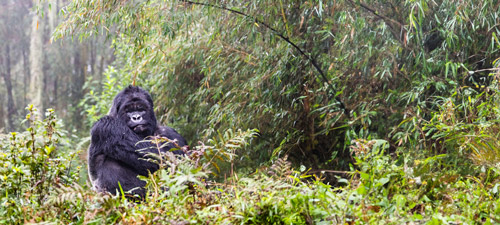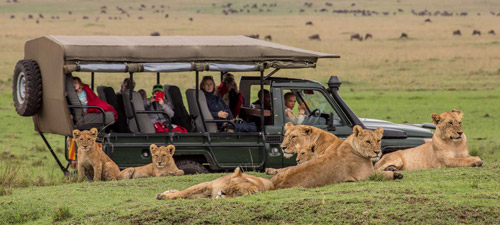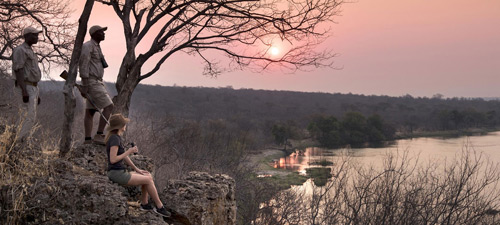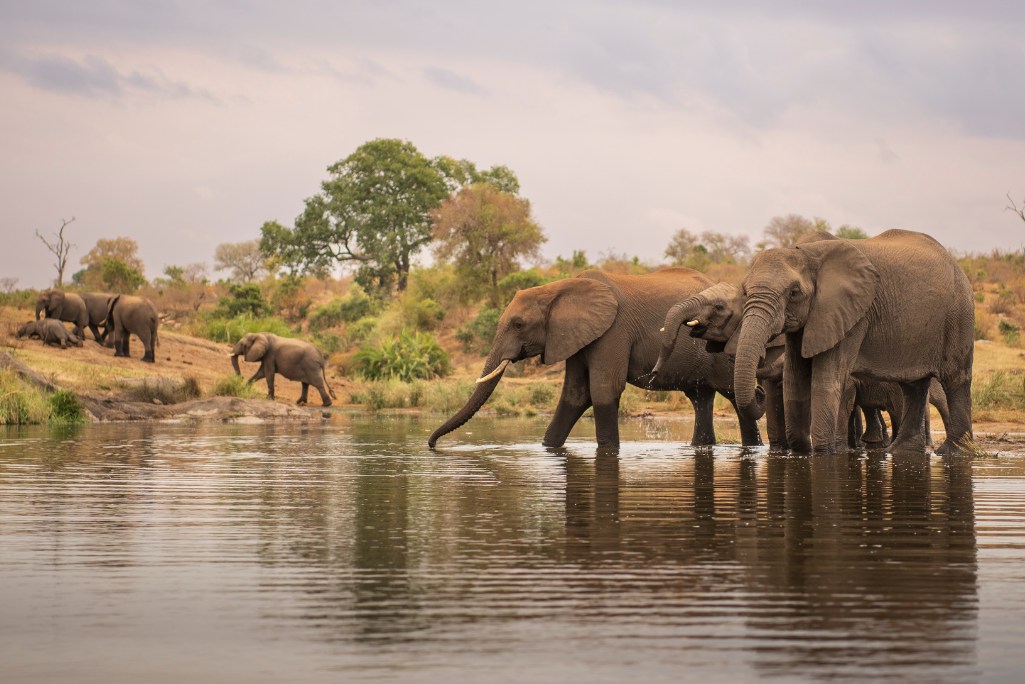
The elephant is one of Africa’s most ecologically significant species. Monitoring their populations is essential for conservation success at a broad level. South Africa’s Kruger National Park is a refuge for these giants. However, the size of Kruger’s elephant population has been discussed for decades. How do we count the elephants in an area of nearly 2 million hectares? How many elephants are too many? And are elephants really a problem? A new study examines the science of counting Kruger’s elephants.
For decades, scientists and conservationists have debated the size of Kruger National Park’s elephant population. Counting these massive, yet often elusive animals across the national park is no small feat.
New research shows we have been underestimating the number of Kruger’s elephants over the past few years, and improved aerial survey techniques are revealing surprising insights into Kruger’s elephant population. These findings can help us better understand elephant numbers, movement patterns, and ecological impact.
Rethinking how we count
Counting elephants is a challenge. Traditional aerial survey methods in Kruger relied on human spotters, often leading to undercounts or inconsistencies.
For decades, Kruger relied on a ‘total count’ method, which involved surveying river catchment areas and recording every visible elephant seen during flyovers. But, an elephant may not be visible while hiding under a tree, or may be hard to see against certain landscapes. And different spotters may have varying abilities in seeing elephants. Due to high flying speeds, observer fatigue, and the pachyderms blending into the landscape, these total counts often missed seeing several individuals on the ground. This meant a significant portion of the population was not accounted for. This method also leaves room for sample errors. Historic total counts tried to count every single elephant, but elephants don’t stand still.
But the recent study included statistical adjustments in the counting method, to help improve precision. The study authors (Ferreira et al., 2024) used data on elephants encountered during annual rhino aerial surveys in Kruger in 2013, 2015 and 2017 and from the study survey conducted in 2020 to form new estimates.
These sample-based aerial surveys – which focus on specific blocks of land at lower altitudes and slower speeds – provide a more accurate picture. By combining sample counts with statistical models, researchers now estimate that Kruger had approximately 31,324 elephants in 2020 (this number could be between 28,457 and 34,191 at any time in 2020). These results also showed a growth rate of 5.3% yearly since 2013.
This marks an extraordinary recovery from the early 1900s, when elephants in the area now encompassing the Kruger National Park were virtually wiped out due to hunting and habitat destruction.
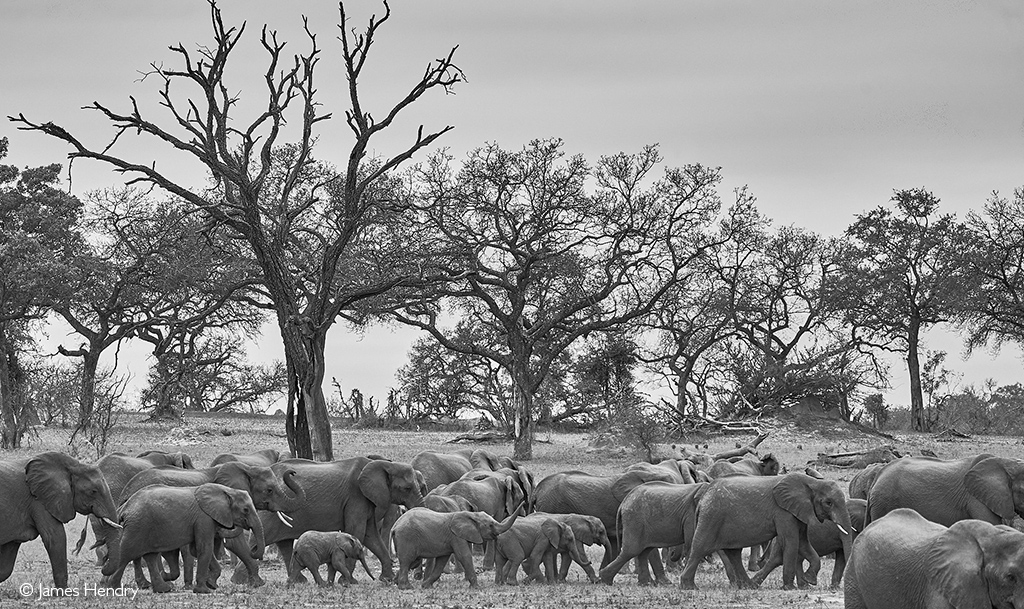

Detecting elephants: Better methods for better results
The improved precision found in this sample-based survey method has revealed essential nuances in how elephants are counted. Elephants are relatively easy to spot from the air compared to smaller species. But factors such as elephant group size and observer experience can still affect the accuracy of aerial surveys. Researchers found that larger herds were easier to detect than smaller, more dispersed groups. This means that surveys conducted at higher speeds and altitudes, like traditional total counts, often missed smaller groups or solitary animals, leading to underestimations. In contrast, sample-based surveys conducted at slower speeds and lower altitudes improved detection rates, allowing researchers to count more elephants with greater precision.
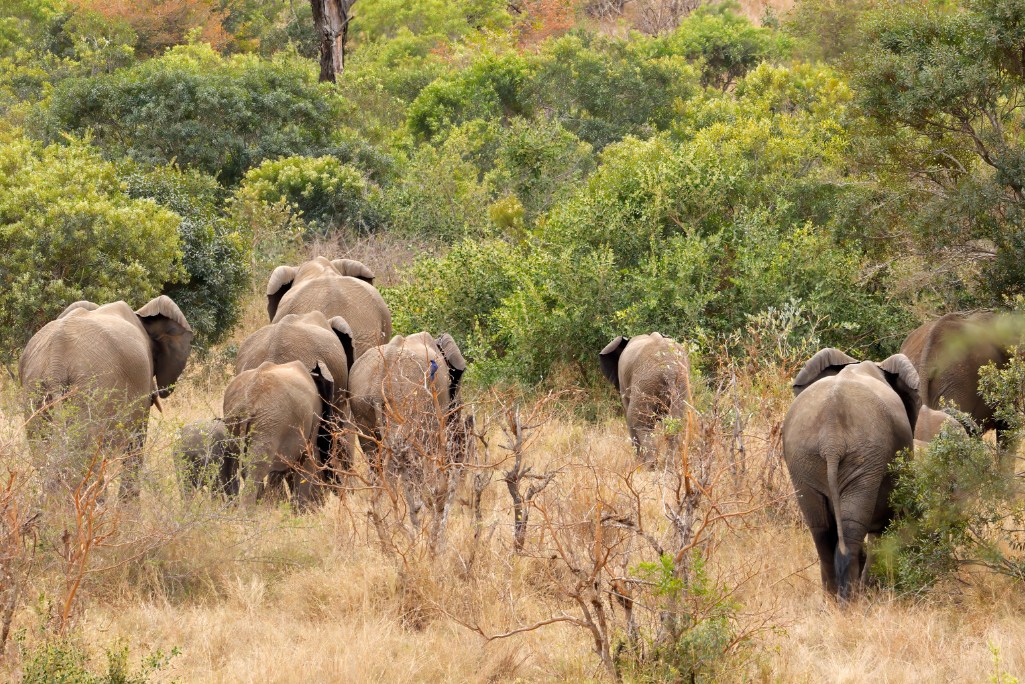
Why elephant numbers are booming
The elephant population has recovered since the early 1900s after conservation efforts improved in the Kruger region. By 1967, when culling was introduced as a management tool, the population had reached more than 7,000. Throughout the culling programme, which took place between 1967 and 1995, management aimed to maintain a population size of 7,000 to 8,500 elephants to prevent overgrazing. With no such interventions today, elephants have surged dramatically. By 2017, Kruger had its largest recorded elephant population, estimated at over 22,000.
But elephant births and deaths alone don’t tell the whole story. The mammals also move in response to environmental pressures. During a recent drought, park management recorded a net movement of elephants into Kruger from private reserves. The study also notes that in times of “limited poaching of elephants in the Kruger” and periods of high poaching pressure in adjacent areas, there were also steep elephant population increases in Kruger.
These migrations complicate population estimates.

More elephants, more impact – but what does that mean?
With over 30,000 of these pachyderms in Kruger, there are concerns about their impact on the park’s ecosystems. They are often described as ‘ecosystem engineers’. And it’s not just about how many elephants are present in the park at any one time. It’s about where they are, and what they do when they are there. “Elephants are key players in the ecosystem. They open dense areas, spread seeds, and even help combat climate change.” said study author Dr Sam Ferreira in a recent article. “But, they can also cause some trouble, like knocking down too many trees in delicate spots.” As such, elephants shape the landscape positively and negatively.
Historically, Kruger relied on artificial waterholes, which allowed elephants to stay in the same areas for longer periods. This led to overgrazing and soil degradation over large tracts of land. Recognising this issue in recent years, Kruger’s management removed many artificial water points, encouraging more natural movement patterns.
Many debates surround the idea that elephants are destroying Kruger’s trees, but the reality is more nuanced. As Ferreira points out: “Saying that 30,000 elephants are destroying Kruger is like blaming a bee for ruining a garden. It’s not that simple. Elephants go where the resources are. When there’s plenty of water and food, they stick around, snack on trees, and, yes, sometimes knock a few over. But when resources shift, so do the elephants.”
Ferreira highlights that Kruger’s management strategy emphasises adaptive management rather than focusing on an ideal elephant number. This involves responding to specific environmental pressures as they arise. For instance, if elephants overuse a sensitive area, management may close nearby waterholes or introduce temporary deterrents to encourage natural movement, says Ferreira.
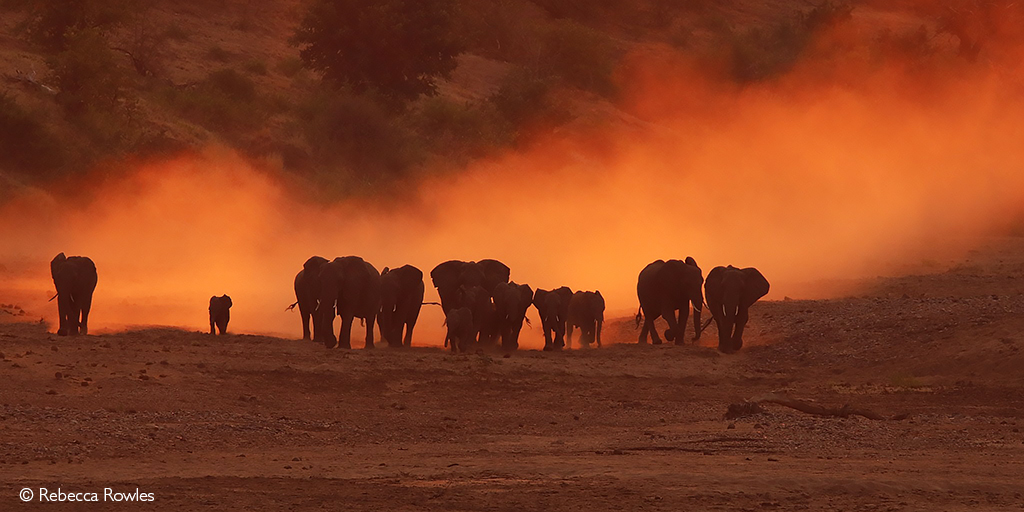
The bigger picture
Across Africa, elephant populations have been devastated by poaching and habitat loss. Yet, in Kruger (and some other regions), elephants thrive. At the same time, managing a large and ever-dynamic elephant population remains challenging. Simply reducing numbers through interventions like culling is no longer considered a viable solution. Instead, conservationists focus on understanding elephant behaviour, movement, and ecological roles to make decisions.
“At the end of the day, elephants aren’t just numbers on a chart,” says Ferreira. “They’re living, breathing creatures deeply connected to their environment. Managing their population isn’t about finding a magic number – it’s about understanding their impact, learning from history, and making thoughtful decisions.”
Kruger’s elephants remind us that conservation has no fixed formulas but requires ongoing dialogue and exploration. By refining our survey techniques and embracing adaptive management, the stewards of Kruger’s elephants can ensure that the national park remains a thriving haven for elephants and the countless other species that share this remarkable landscape.
 Are you keen to see the elephants of Kruger National Park? Check out these amazing safari ideas to Kruger National Park here.
Are you keen to see the elephants of Kruger National Park? Check out these amazing safari ideas to Kruger National Park here.
Reference
- Ferreira, S.M., Crowhurst, E.T., Greaver, C. & Simms, C. (2024). Sample-based estimates of elephants in Kruger National Park, South Africa. African Journal of Wildlife Research, 54(1), (24 September 2024).
- Ferreira, S.M. (2024). Big trunks, bigger questions: Rethinking elephant numbers in Kruger. SANParks.org. 23 January 2025.
- Van Aarde, R., Whyte, I. & Pimm, S. (1999). Culling and the dynamics of the Kruger National Park African elephant population. Animal Conservation. 2. 287-294. 10.1017/S1367943099000621.
Further reading
- Do we have an elephant problem? The ‘elephant problem’ – ecologists, landowners and tourists are grappling with the elephant problem. But what does this mean?
- Counting animals – the technology helping conservationists: Counting wild animals can be a complicated process, particularly when estimating populations in some of Africa’s massive protected wild areas. Find out why
To comment on this story: Login (or sign up) to our app here - it's a troll-free safe place 🙂.![]()



